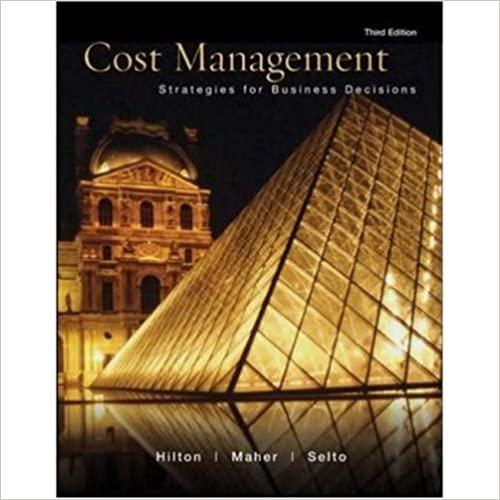a. Actual sales for December and budgeted sales for the next four months are as follows: December (actual) $ 415,000 January $ 260,000 February $ 250,000 March $ 335,000 April $ 310,000 b. Sales are made 15% cash and 85% on credit. All payments on credit sales are collected in the month following sale. c. The company's gross margin is 52% of sales. (In other words, cost of goods sold is 48% of sales.) d. Monthly operating expenses are budgeted as follows: Salaries and wages 60,000 Rent $ 25,000 Supplies $ 15,000 Advertising $ 10,000 Depreciation $ 3,000 e. Each month's ending Inventory is targeted to be 25% of the following month's cost of goods sold f. One-half of a month's inventory purchases is paid for in the month of purchase the other half is paid in the following month, 8. During January, cash dividends of $150,000 are to be paid. h. During February, the company plans to purchase some new shelving units for $1,500 in cash. 1. The company's December 31st cash balance was $40,000, Management wants to maintain a minimum cash balance of $30,000. The company has an agreement with a local bank that allows the company to borrow in increments of $1,000 at the beginning of each month. The interest rate on these loans is 2% per month and for simplicity we will assume that interest is not compounded. The company would, as far as it is able, repay the loan plus accumulated interest at the end of the quarter. Required: Prepare the budgets as outlined on the following tabs: Cash Collections; Purchases; Cash Disbursements; Cash Budget Schedule of Cash Collections January February March Q1 Cash Sales Credit Sales Total Cash Collections $ $ $ $ $ Reminder: see note regarding timing of collections in "b". Purchases Budget January February March 91 Reminder--total Q1 is NOT a summation across Budgeted Cost of Goods Sold Add: Desired ending inventory Total needs Less: beginning inventory Required purchases $ Reminder total 1 IS NOT a summation across Schedule of Cash Disbursements for Merchandise Purchases February March Qi $ January 74,700 74,700 December purchases January purchases February purchases March purchases Total cash disbursements for purchases ulu 74,7005 74,700 Cash Budget* January February March gi Beginning cash balance Add: cash collections Total cash available Less: cash disbursements Inventory purchases Selling and admin expenses Equipment purchases Dividends paid Total cash disbursements Excess (deficiency) of cash Financing Borrowings (at beginnings of months) Repayments (at end of the quarter) Interest Total financing Ending cash balance











